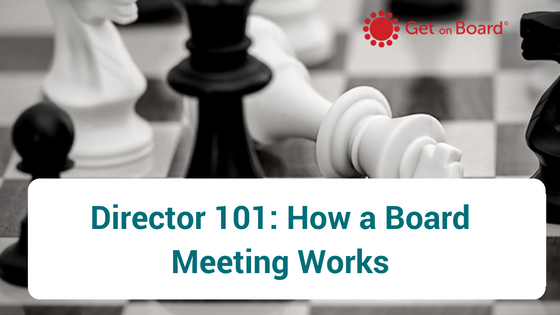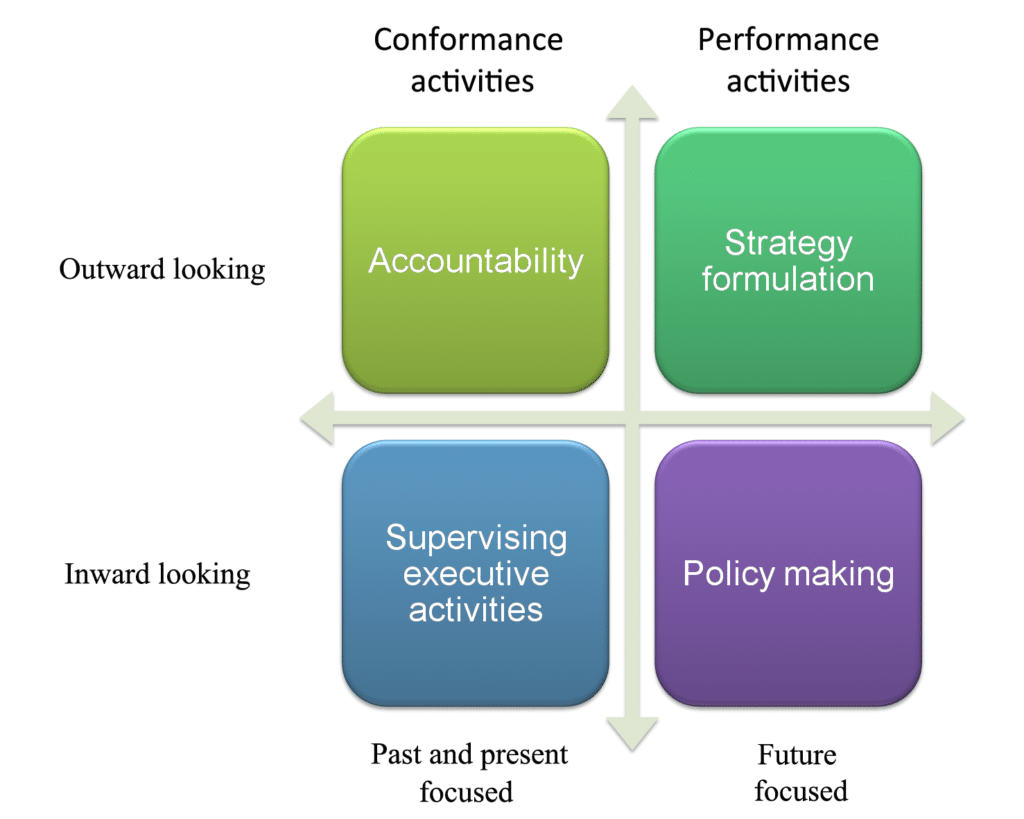Director 101: How a Board Meeting Works

Before I went to my first board meeting I thought that it was just going to be like any other meeting that I had been to in my ‘day job’ as a marketer in a professional services firm.
Oh my, how wrong I was.
I vividly recall sitting at the board table thinking “WTF is going on here?! I don’t have a clue what they’re talking about!”.
To avoid you having to experience this same awkwardness, here’s an insight into what you can expect from your first board meeting:
Opening: The Chair will officially open the meeting and thank everyone (who is there) for attending.
Roll call: generally the Chair will ask for / announce any apologies for the meeting.
Conflicts of interest: your board should have a standing conflict of interest register that is circulated with each board pack. However, a prudent Chair will ask if anyone has a conflict with any item on the agenda before getting into the meeting.
Review of last meetings’ minutes: this is where the board approves the minutes of the previous board meeting as a true and accurate reflection of the meeting. Any changes that need to be made will be requested at this stage (it is advisable to review the minutes when they are first sent after the meeting and request any amendments at that point, rather than waiting until the next meeting to raise any queries).
Business arising from last meeting: an overview of the things that the board agreed to have happen at the last meeting that have either occurred or are in the process of being actioned. This information may also be contained in the ‘for noting’ section towards the end of the agenda, depending on agenda structure and/or action items outstanding/completed.
Items for Decision: this part of the agenda contains the items that the board has to make a decision on. These can range from accepting the minutes of the previous meeting, accepting the financial statements and solvency statement, to agreeing on a strategic direction change, or to purchase a significant asset.
Items for Discussion: this is where the Chair or CEO (or equivalent) will raise matters that require input from other board members or simply require further conversation / debate before an action is taken (or not). For example, CEO reports, committee reports and recommendations, updates on significant projects, changes within the industry, significant staff movements, etc.
Strategy update: sometimes included in the “For Discussion” or “For Decision” section (depending on what is to be discussed in relation to the business strategy). I’ve singled out this agenda item out as boards often don’t spend adequate time discussing strategy – and all of the assumptions and activities that surround it – after it has been set each year. The Tricker model of corporate governance (diagram below) advocates for as much focus on strategy activities as for other inward-looking compliance and oversight functions.

An item of this nature makes sense to be featured towards the start of an agenda as people are fresher and have the brain capacity to talk about and work-through strategic matters.
Items for Noting: these are all the bits and pieces that don’t require action or conversation during the meeting. You can expect to see things like correspondence received, upcoming significant dates, certain reports, etc. Essentially they are taken as read at the meeting unless someone has a question on any of the information provided for noting.
General Business: a place for people to raise questions or queries on things not included in the agenda. These could range from mentioning something of interest, to registering a complaint, to suggesting the toilet paper brand be changed. It could be anything, but you should try and make it relevant or of interest to the board. Everything else (like the toilet paper thing) you should send via an email to the Chair (or full board), away from the actual meeting.
In-Camera: a funny word for what can be a serious part of a board meeting (it comes from the Latin word ‘chamber’ and now refers to ‘in private’). An in-camera session is a meeting of the board members without management being present. It allows the board to raise matters that are best done away from management ears. It could be raising something about the CEO (good or bad), or business (e.g. moving business location) that the board is not ready to make more widely known. In-camera can be done before the formal board meeting commences, or at the end of the board meeting.
During the meeting you will also likely hear a lot of business-specific language; think acronyms, job titles, and industry terminology. It will feel like you’re learning a new language. You are. It will feel weird. You will adjust; trust me! Ask lots of questions and for clarification and never assume that you know what something means.
Furthermore, each board will have its own agenda structure and way of doing things; however, I hope that this gives you enough understanding of how a board meeting works so that you don’t feel super awkward and like a fish out of water at your first board meeting. If you do feel like that, don’t worry; we’ve all been there!
Subscribe to Receive Access to Articles, Resources, and Tools to Support Your Board Goals.
